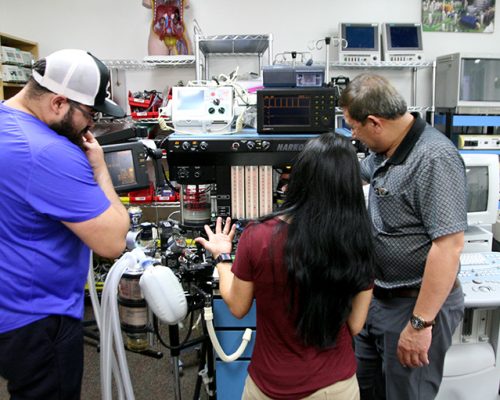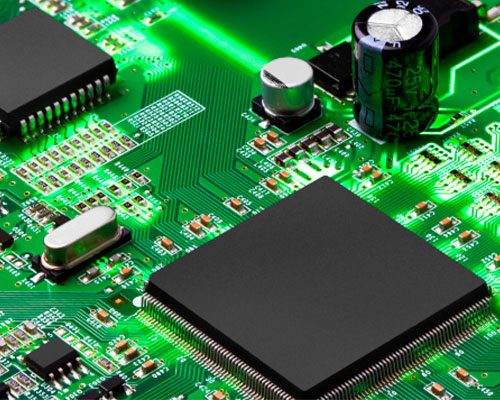Transilluminators are essential tools in the Neonatal Intensive Care Unit (NICU), playing a critical role in the care and diagnosis of critically ill newborns. Our Wee Sight Transilluminator uses the output light wavelength of approximately 629 nm to enhance the visibility of tissues and veins and help healthcare professionals perform necessary medical procedures with greater precision and safety.
At International Biomedical, we understand the importance of transilluminators in neonatal care and are committed to providing high-quality, reliable equipment to support the needs of newborns.
What Are Transilluminators?
A transilluminator is a medical device that emits bright, focused LED light. The light illuminates body tissues so the underlying structures, like veins, are easier to see when handling the tiny limbs of a neonate.
Transilluminators come in various forms, including handheld devices designed for an infant’s small size and use in incubators. Their key feature is their ability to provide a clear, bright light that penetrates the skin and illuminates the tissues beneath.
How Are Transilluminators Used in the NICU?
In the NICU, transilluminators are used for several critical procedures and assessments, helping healthcare professionals care for their tiny patients with as much ease and comfort as possible.
Vein Visualization and IV Placement
One of the primary uses of transilluminators in the NICU is to aid in visualizing veins for intravenous (IV) placement. Premature and critically ill newborns often have tiny, fragile veins that can be challenging to locate and access. By placing the transilluminator under or near the infant’s limb, the veins become more visible, making IV line insertion more accessible and efficient. This reduces the number of needle sticks and associated trauma, improving the overall experience for both the infant and the healthcare provider.
Assessment of Pneumothorax
Pneumothorax, or the presence of air in the chest cavity outside the lungs, is a serious condition that can occur in newborns, especially those requiring respiratory support. Transilluminators can be used to assess pneumothorax by shining the light through the chest wall. Air-filled areas will transmit the light differently than areas with normal lung tissue, helping clinicians identify and diagnose the condition quickly.
Detection of Certain Congenital Anomalies
Some congenital anomalies, such as diaphragmatic hernias or cystic hygromas, can be better assessed with transillumination. The light helps outline the structure of the anomaly, providing valuable information about its size, location, and potential impact on the infant’s health.
The Science Behind Transillumination
The effectiveness of transilluminators lies in light’s properties and how it interacts with body tissues. When light passes through the skin and tissues, it is scattered, absorbed, and transmitted to varying degrees based on the type of tissue and its composition.
Blood vessels absorb more light, making them appear darker, while fluid-filled spaces transmit light more readily and appear brighter. The differential absorption and transmission of light help clinicians distinguish between different types of tissues and structures for a non-invasive and efficient means of diagnosis and procedural guidance.
Benefits of Using Transilluminators in the NICU
In the NICU, precision and accuracy are essential. Transilluminators, with their ability to precisely visualize underlying tissues, are indispensable tools in various medical procedures. Below are a few of the benefits that transilluminators provide when caring for premature and ill neonates:
- Non-Invasive: Transillumination is a non-invasive technique, making it safe and gentle for use on fragile newborns. There is no need for incisions or other invasive procedures, reducing the risk of infection and other complications.
- Improved Visualization: Transilluminators provide better visualization of veins and tissues, making it easier for healthcare providers to perform necessary procedures confidently and efficiently.
- Accuracy and Precision: By providing a clear view of underlying structures, transilluminators improve the accuracy and precision of medical procedures. This, in turn, improves outcomes and reduces the stress associated with multiple attempts at accessing veins or other structures.
- Rapid Diagnosis: Transilluminators allow for rapid assessment and diagnosis of certain conditions, such as pneumothorax and hydroceles. Quick identification of these issues is crucial for timely intervention and treatment.
Support the Health and Well-Being of Neonates with Transilluminators
Transilluminators are invaluable tools in the NICU, providing critical support for the care and diagnosis of neonates. By improving the visibility of veins, tissues, and fluid collections, these devices enable healthcare professionals to perform procedures with greater accuracy and safety.
At International Biomedical, we are dedicated to supporting the specialized needs of neonatal care with advanced, reliable transillumination technology. Our Wee Sight Transilluminator patients receive the best possible care in the NICU.









